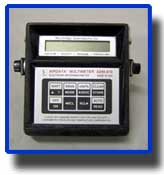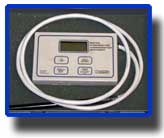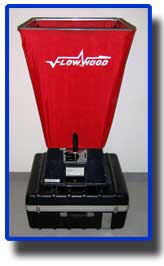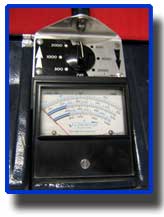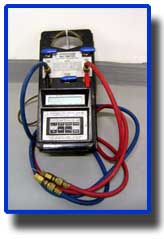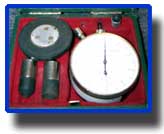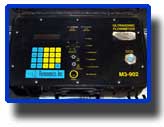  |
Making Sure Buildings Operate As Planned
Robert L. Schwed, Editor |
|
|
Formal testing & balancing of buildings, now an integral part of the construction process, grew out of the logical desire to have comfort heating & cooling systems perform as the designers intended. Armed with an arsenal of tools and test instruments, today's testing & balancing (TAB) technicians seek to make buildings operate as close to the design engineer's intentions as possible.It wasn't always that way. In fact, the industry developed out of the disappointment engineers felt when, after installation, their designs didn't function as planned. Two early pioneers, H. Taylor Kahoe and George E. Coultas, were both working as designers in the late 1950's and early 1960's. They were among the engineers who were disheartened by the way the mechanical systems they designed worked once they were installed. |
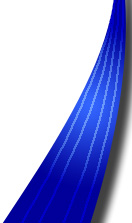 |
||
They found themselves doing a lot of moonlighting as they tried to get mechanical systems operating effectively. In 1962 those efforts were taking up so much of their time that they decided to do testing and balancing exclusively. Kahoe Air Balance Company was formed in Eastlake, OH, just east of Cleveland. According to Ralph L. Meacham, current president of Kahoe Air Balance and an employee of the company since 1965, Kahoe and Coultas were dedicated to establishing a totally independent testing and balancing industry. Their intention was that TAB agencies would function without any affiliation with any contractors, manufacturers, or engineers. In 1964, largely through the efforts of Kahoe, the Associated Air Balance Council (AABC) was formed. He served as the Council's president for a number of years after its formation. In the beginning, only a few firms were involved in the Council but, today, it's an international organization with 65 certified members. The 1982 Fourth Edition of AABC's National Standards states, "The Associated Air Balance Council was established in 1964 to meet the needs for training and to establish acceptable total system balance techniques and standards." The AABC has four major functions.
Each AABC firm must have at least one certified Test and Balance Engineer (TBE). In order to qualify for this position, the person must submit an education resume acceptable to AABC. He can have no less then ten years of TAB experience, five years of which must be continuous field experience in actual TAB work. In addition, he has to pass an AABC examination for certification. An AABC-qualified Test and Balance Technician must have completed an apprenticeship program, have five years of experience, and pass a qualifying test. According to Meacham, from 60% to 70% of design engineers now specify TAB on their projects. "The travesty of that," he adds, "is that they don't always adhere to their specs. They specify it but it doesn't always happen because of budget cuts or, quote, 'to save money.' You might save it today and spend twice as much later, but that's a hard thing to deal with."
The ProcessTo totally balance a building's hvac system, TAB technicians take temperature, pressure, volume, electrical, rotational speed, sound, and vibration measurements.AABC describes the procedure as: "Total System Balance is the process of testing, adjusting, and balancing environmental and other systems to produce the design objectives. "Air conditioning is defined by the American Society of Heating, Refrigerating and Air-Conditioning Engineers as 'The process of treating air to control simultaneously its temperature, humidity, cleanliness, and distribution to meet the comfort requirements of the conditioned space.' "Each air treatment process in the conditioning system contributes a specific function to produce proper environmental conditions. However, it is the coordinated action of all of these processes in a system - each related to and influencing the others - that produces the desired conditions. If any one of these coordinated functions does not perform as designed, the final results will affect system performance. "Total System Balance is the process of testing, adjusting, and balancing each system component so that the entire system produces results for which it was designed. It is a science that requires proper use of instruments, evaluation of readings, and adjusting the system to design conditions. The mere ability to use an instrument does not qualify a person as a Test and Balance Engineer or Technician. Qualification requires training and years of field experience in applying proven techniques and in analyzing gathered data." In an air and water balance, the process begins on the air side with the technician checking each piece of equipment to make sure they are functioning properly. In the course of balancing a system, he will have taken air measurements from every outlet in the building. He attempts to get the system into a maximum condition so he can simulate a loaded demand at which point he adjusts the components of the system. In the process he will also be dealing with return air and exhaust from the space. On the water side, he will be checking and adjusting pumps, chillers, circuit setters, and flow metering devices. Meacham says, "What we really do is tune up the system, to make sure it is working to the best ability of the equipment and the installation. We're also trying to maximize its efficiency." The efficiency they try to achieve is what the engineer envisioned. "We're really trying to set it up to the design engineer's specifications," says Meacham. "If he's trying to design an extremely energy-efficient system, we're in that process. We're not making a conscious effort to save energy. We're trying to set the system up to the design engineer's specs. If his goal was a high-efficiency system, then we help him achieve that goal. We are not designers and we are very careful to stay out of the design aspect of buildings. That's because these are the people who specify us and who depend on us." As acceptance of testing and balancing has grown among engineers, so has the realization that certain aids to the TAB process need to be specified in the original design. "Engineers today are much more aware of duct dampers. It wasn't too many years ago that there was always a fight to get dampers installed. But now most engineers are aware of the need for them, and the advantages of putting them in the original design." Another item that is regularly seen in systems today are Pete's plugs, which provide a rubber gasketed access to piping systems. Through these outlets a technician can insert probes directly into the fluid to check temperatures and pressures. TAB technicians also get involved in insuring that a building will be safe. They check stairwell pressurization under varying conditions. Digital equipment is available that will provide the technician with the differential pressure between two different locations such as outside and inside a stairwell. Technicians are also sometimes called upon to check the pounds of pressure it takes to open doors under fire conditions. This is to make sure occupants can get out in an emergency. Normally, it only takes one technician to balance a building unless he has an apprentice or a helper with him. Meacham says that's the most cost effective way. If more than two journeyman are used in a building, it's usually because there is more than one system. At the completion of a system balance, the contractor is presented with a report on the process. Ultimately, the report goes to the engineer and to the owner unless the owner is the client. AABC's definition of the report: "A report is a record of actual test and balance results. This report shall reflect actual, tested, and observed conditions of all systems and components during Total System Balance. The report shall be certified, dated, and signed by the certified Test and Balance Engineer." A report also contains design data as well as the normal operating conditions of the building systems that are specified for Total System Balance. It provides sufficient data pertaining to the instruments used and system operating modes during balancing to allow any reported data to be repeated. "A Total System Balance project shall not be considered complete until the owner's representative has been provided with a final Test and Balance Report that thoroughly describes the operation of the systems," according to AABC. Although most of the buildings companies like Kahoe deal with have large central systems, Meacham says they do get involved with smaller spilt systems, computer room units, and heat pumps. "The more complex jobs are obviously the central systems, especially those that involve variable air volume," he says. "These systems have become very sophisticated and really need attention because there are so many variables. Someone really has to come in and get them set up and working properly." Increasingly, the technicians at Kahoe are encountering floor-by-floor hvac systems. Especially in speculative buildings, the balancing agency balances on a floor-by-floor basis as the space is leased. Meacham's people are also encountering more buildings with energy management and building management systems, and those that employ direct digital control (DDC). The technicians haven't encountered any particular problems with these systems with the exception of keeping up with the technology. Says Meacham, "A lot of them are different. Each time you run into a new system, it has its own idiosyncrasies. It's hard to keep your people up to speed with the technology. We work hard at it, but it's difficult because the technology is changing very rapidly." Although Meacham is quick to point out that his company does not get involved in any way in hvac system design, that doesn't mean they won't help an engineer. "We'll go in during the design stage and go over the drawings," he says. "We want to make sure the system can be balanced - that there are dampers in air systems and balancing valves in water systems. Our object is not design but the ability to balance. " Do Kahoe technicians run across buildings that just won't work? The answer is yes, but Meacham says it's a rarity. "There are some out there that just won't work," he adds. "We try to make them as efficient as we can given what's installed, or we make recommendations concerning what we feel would help improve the situation, such as changing dampers or motors.
The tools of balancingWhile most established TAB agencies would have a much larger inventory of tools and test instruments, the basic list required by AABC for certification includes these instruments in various sizes: hydronic differential pressure gages, anemometers (both rotating vane and deflecting vane), a chronometric type tachometer, Pitot tubes, electric meters, psychrometers (either sling or powered), smoke set, sound pressure meter with octave band analyzer, thermometers, manometers, Bourdon tube gages, and air differential pressure gages (magnetic linkage).Because instruments and test equipment are the lifeblood of a TAB agency, and because many of them are extremely expensive, they are handled with extreme care. AABC requires that they be recalibrated within six months of a TAB job. Some instruments are more delicate and can't even last the six months, according to Meacham. He says, "If the technician senses that there is a problem, then we just replace the instrument and get it back in for calibration or repair. Kahoe also has a 40-point recorder called a data logger that can profile a building, or a fan, and record 40 different points almost instantly. It can be used to record temperatures, humidity, pressures, and differential pressures. The Ohio firm has specialized equipment for scanning HEPA filters used in clean rooms and surgical suites. The company also has a particle counter used to certify the classification of clean rooms. "The equipment isn't used daily," says Meacham, "but when you need it, it's nice to have it and be able to provide the service. We see this as kind of a side service for our customers, and feel it complements our service, as does the sound testing we do." Meacham says the biggest improvement in testing he's seen in the last decade is the use of flow hoods and the improvements that have been made in them. "They've become very sophisticated," he says, "more durable, more reliable. They are an asset and we rely on them." While new flow hood designs provide a digital readout, Meacham prefers those with analog readouts. That's because, as the digital numbers fly by, it's hard for the technician to get a handle on what's actually happening. They claim the digital equipment is also sometimes slower to provide a readout than the analog equipment. Digital thermometers, on the other hand, are quite popular at Kahoe and each of the firm's four offices has at least one or two of the devices for use by field technicians. The old standby for measuring air pressure - and one that is still heavily relied on, according to Meacham - is the air manometer that uses Pitot tubes to traverse a duct. While Meacham says the hoods are very helpful and reliable, Kahoe insists that its technicians use a manometer to cross-reference the hood readings they get. "We strongly encourage cross-references," he says, "testing by more than one method provides a comparison." Just as auto mechanics armed with the latest computerized test equipment can make an automobile sing, highly skilled TAB technicians armed with an arsenal of properly calibrated instruments can make a building's mechanical system live up to its potential. Engineered Systems P.O. Box 7016, Troy, MI 48007 |
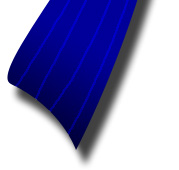
|
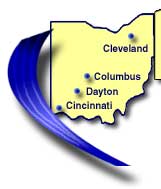 |
 |
Proud Member Of |
|
Associated Air Balance Council |
|||
Branch Office Contacts: Pittsburgh: Griffith Severin Columbus: Andy Steiskal Cincinnati/Dayton: Doug Meacham |
Corporate Headquarters: 35601 Curtis Boulevard |
||
|
